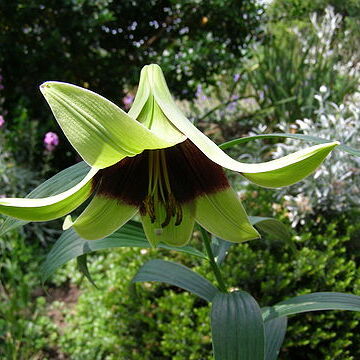A herb and bulb plant. The bulb is 2 cm across. The plant grows to 1.5 m high and spreads 30-45 cm wide. There are underground stems which can produce bulbs and new shoots. The leaves do not have leaf stalks. Leaves are alternate, opposite or in rings. They are 3-12.5 cm long by 1-3 cm wide. The are sword shaped and taper. The flowers are large and creamy yellow with purple dots. They occur singly and droop.

